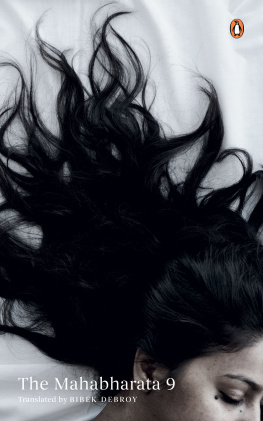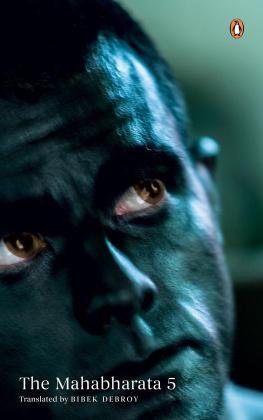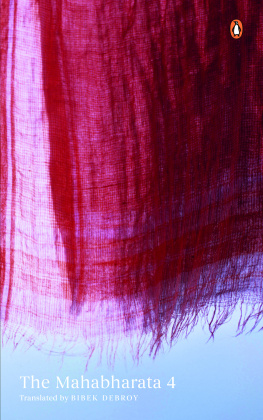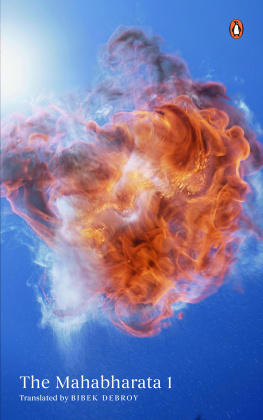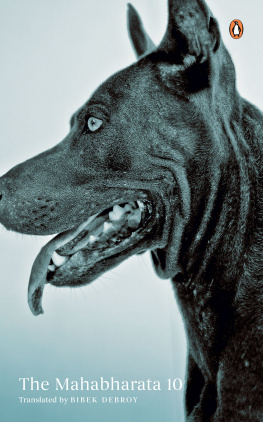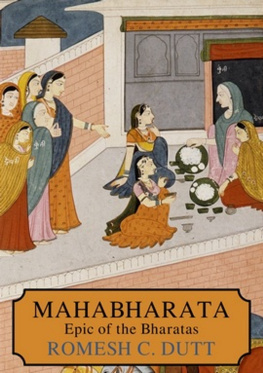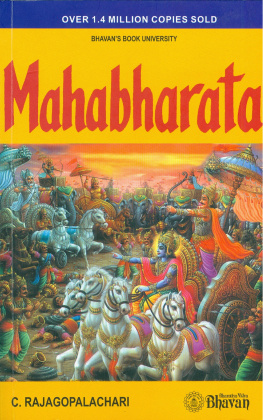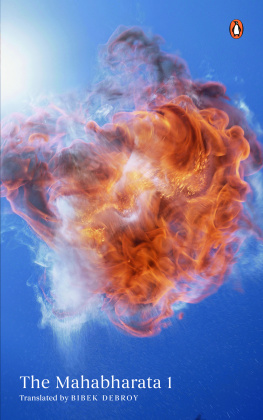DECODING
THE
METAPHOR
MAHABHARATA
DIWAKER IKSHIT SRIVASTAVA

ISBN 978-93-52010-00-4
Copyright Diwaker Ikshit Srivastava, 2017
First published in India 2017 by Inkstate Books
An imprint of Leadstart Publishing Pvt Ltd
Sales Office:
Unit No.25-26, Building No.A/1,
Near Wadala RTO,
Wadala (East), Mumbai 400037 India
Phone: +91 96 99933000
Email:
www.leadstartcorp.com
US Office:
Axis Corp, 7845 E Oakbrook Circle
Madison, WI 53717 USA
All rights reserved. No part of this publication may be reproduced, stored in or introduced into a retrieval system, or transmitted, in any form, or by any means (electronic, mechanical, photocopying, recording or otherwise) without the prior written permission of the publisher. Any person who does any unauthorised act in relation to this publication may be liable to criminal prosecution and civil claims for damages.
Disclaimer: The Views expressed in this book are those of the Author and do not pertain to be held by the Publisher.
Editor: Padmini Smetacek
Cover: Tina
Layouts: Logiciels Info Solutions Pvt. Ltd.
Typeset in Palatino Linotype
Printed at Dhote Offset
GRATITUDE AND SALUTATIONS
There is only one God, and in His most recent Avatar
He chose the form of
BHAGAWAN SRI SATHYA SAI BABA.
Loving pranams at His, my Swamis, divine lotus feet.
This entire work, as everything else with me, is part of His
bounty that He has so graciously granted me access to. A work
of this nature is impossible without His divine inspiration. This
is His boon, His blessing, which He has so graciously showered
upon all of us. No words that I can form will ever be adequate
to express my gratitude. This work is offered in humility with
love and gratitude at
His Divine Lotus Feet.
Heartfelt gratitude and loving pranams at the feet of
the divine forms of the One God,
Maharishi Manu, who first lighted the lamp within me,
Gurumayi, Swami Chidvilasananda, who stilled my troubled
world, and Mata Amritanandamayi, at whose feet and bosom
I have cried.
I acknowledge, in all humility, the debt of gratitude to
Kinkar Vishwashreyananda
for so graciously passing on his knowledge and the
knowledge of his gurus
Kinkar Vitthal Ramanuja Maharaj and
Most Revered Shri Shri Sitaramdas Omkarnath.
My loving pranams at the feet
of these divine forms of the one God
DEDICATION
Dedicated to my parents
Late Shri Abhimanyu Kumar Srivastava and
Late Smt. Shail Bala Srivastava
ABOUT THE AUTHOR
The author retired as a senior officer with the Government of India. From an early age he has been interested in Hinduism, its philosophy and its many manifestations. He has been seeking answers for the past couple of decades and has been pursuing this project, which is a direct fallout of this quest for the last several years. Though the author researched numerous books and discussed with several people learned in the field, he believes it is only due to the divine blessings and grace of his Swami, Bhagawan Sri Sathya Sai Baba that he has received answers and clarity and the book has been possible.
The Mahabharata really needs no introduction in India; it is a part of our folklore. This is the itihasa (history) of two warring families related to each other. All the strengths and weaknesses of human nature valour and chivalry, cunning and deceit, daring and romance, lust and greed, righteousness and depravity are woven into this intricate and fast-moving panoramic tale that has enthralled listeners for well over five millennia.
The Mahabharata, however, is no fable; it is the pinnacle of human thought and understanding. This remarkable poem, which appears mythical in character, is the verbal expression of the direct experience by the sage Vyasa, of the ultimate truth of Lord Shiva, the Primordial Creator and of His illusion the Dance of Shiva, His dance of death, the evolution of a new creation.
The stories are naturally metaphors; you cannot otherwise describe experience in words.
The word Mahabharata comprises the syllables maha, bha, ra and ta. Maha, of course, means great; bha, ra and ta stand for, respectively, bhava, rasa and tala, the three attributes of dance. Mahabharata, the word, is thus an expression for the great dance the Cosmic Dance of Shiva and as personification, the Great Dancer, Lord Shiva Himself.
The Mahabharata is a treatise on the realisation of our own divinity I am Brahman (which realisation is the goal of human existence) in this life itself, even as we go about performing our daily chores. To that end, it embodies all knowledge (cosmology, medicine, mathematics, economics, philosophy, management and more) and covers every aspect of human life.
The Mahabharata is the story of life. The purpose of life is to experience the divine mystery that is life: the majesty and glory expressed in the infinite forms of creation, our position in this cosmic order and the eventual realisation of our own divinity. Life is Gods bounty, a gift that must be lived and enjoyed with gratitude.
The Mahabharata is about life and living, the here and now, and covers the five stages of human life: Bal Avastha (living with our parents experiencing God in our parents), Brahmacharya (living with a guru experiencing God in our guru), Grihastha Ashram (living with society at large experiencing God in every human being), Vana Prastha (living with nature experiencing God in all nature) and Vairagya (living with self experiencing God in oneself).
The Mahabharata is the most exhaustive exploration ever of the human condition. It thus covers passion (Kama) and its exhaustion (Moksha) and the in-between, the wealth of happiness (Artha) and balance or order (Dharma) the means of its achievement.
The Mahabharata details the principles of dharma upon which to base our lives for lasting peace and happiness. However, these are not laid out in the form of commandments, for life does not follow societal rules and regulations. Consequently there are no quick fixes, and throughout the text you find numerous discussions where beliefs and practices are challenged, assumptions questioned and doubts raised and, of course, clarifications or answers provided.
What emerges is that the root cause of all human problems is attachment (I and mine). From I and mine emerge envy, desire and expectation (I want for all things material), which leads to himsa (violence or the imposition of ones will) for the fulfilment of that want. I is the ego and is the cause of our insecurity, fear and sorrow.
And the solution? Moksha (liberation, salvation) lies in the subjugation of the ego I, through ahimsa, the non-imposition of ones will and the elimination of I want. Moksha lies in proactively spreading love to one and all, through acts of dharma, where every act is carried out diligently and is born out of love, truth, righteousness and compassion. In life there are no right and wrong just karma (repercussions) and dharma (without repercussions). One binds, the other liberates and we choose. We have the freedom of choice to create our own destiny.
The Mahabharata, a text of massive proportions more than 100,000 verses is the most comprehensive treatise on day-to-day living, and contains within it the Bhagavad Gita, which, by itself, is undoubtedly the most definitive compendium of the Vedic Hindu way of life. Of course, what the Gita expounds in a discourse, the rest of the Mahabharata does through metaphors
Next page
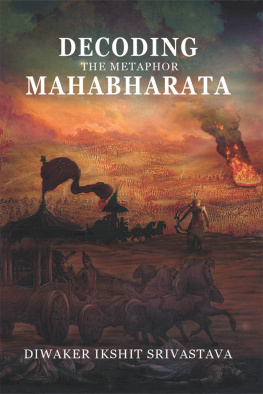
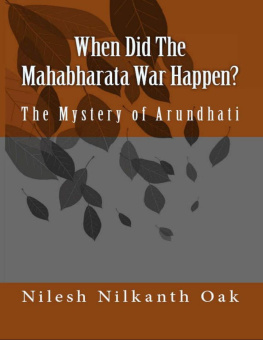
![Krishna Dharma - Mahabharata: [the greatest spiritual epic of all time]](/uploads/posts/book/213378/thumbs/krishna-dharma-mahabharata-the-greatest.jpg)
